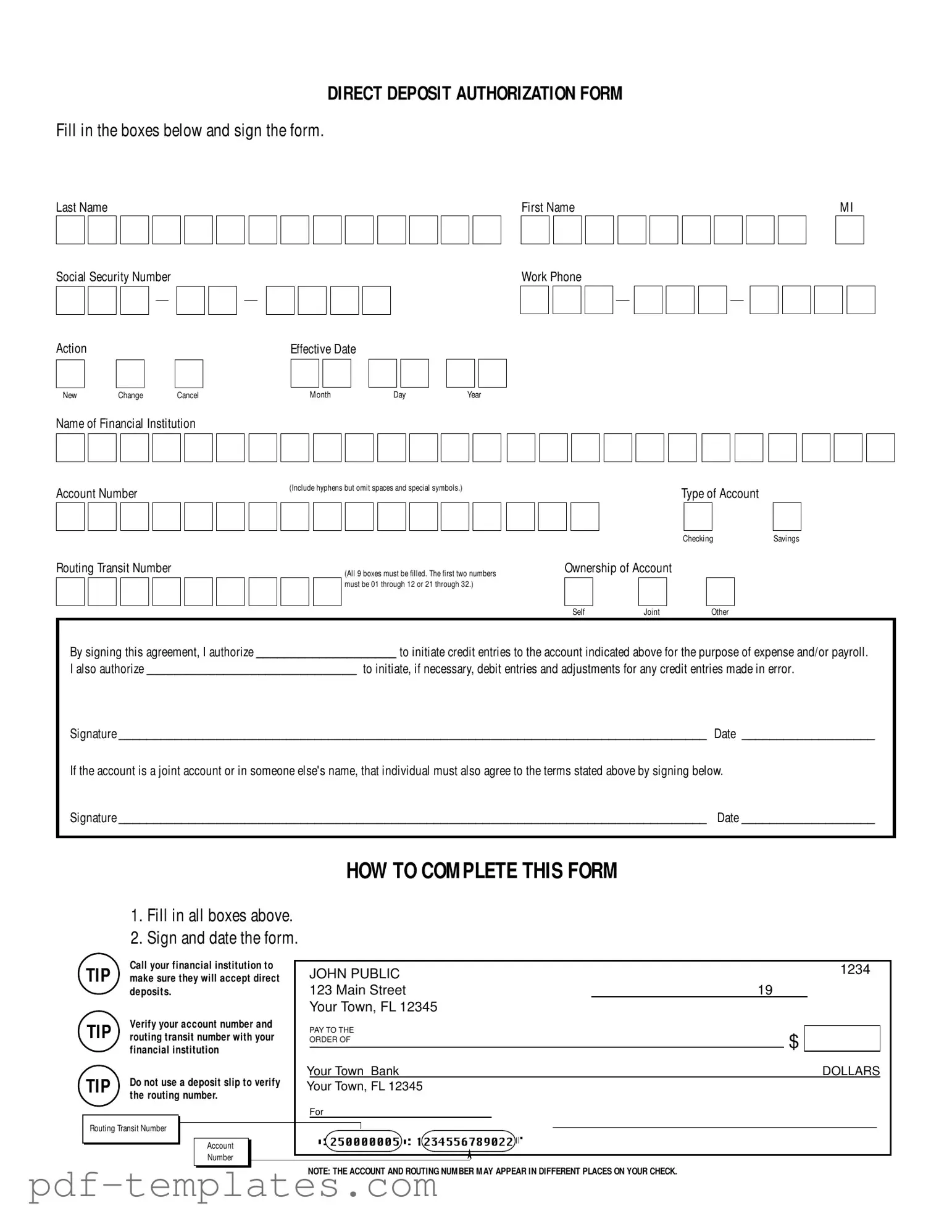The Generic Direct Deposit form shares similarities with the Payroll Deduction Authorization form. Both documents are used to manage how funds are deposited or withdrawn from a bank account. The Payroll Deduction Authorization form allows employees to authorize their employer to deduct specific amounts from their paychecks for various purposes, such as retirement contributions or health insurance premiums. Like the Direct Deposit form, it requires personal information, including the employee's name and Social Security number, and must be signed to be valid. Both documents aim to streamline financial transactions, ensuring that funds are managed efficiently and accurately.
Another document similar to the Generic Direct Deposit form is the Automatic Payment Authorization form. This form enables individuals to authorize recurring payments directly from their bank accounts, such as utility bills or loan payments. Like the Direct Deposit form, it requires essential banking details, including the account number and routing number, to facilitate transactions. Both forms serve the purpose of automating financial processes, reducing the need for manual payments, and ensuring timely transactions. The signature requirement ensures that the account holder agrees to the terms of the arrangement.
The Direct Deposit form is also comparable to the Bank Account Change Request form. When individuals need to update their banking information, such as switching to a new account for direct deposits, they often use this type of form. It typically requires the same basic information, including the new account number and routing number. Both forms aim to ensure that funds are deposited into the correct account, minimizing errors and delays in payment processing. The Bank Account Change Request form may also require a signature to confirm the account holder’s consent to the changes.
To facilitate the sale of a trailer, it is important to use a comprehensive form such as a Trailer Bill of Sale document. This form helps to officially certify the transfer of ownership while detailing essential information about the trailer, ensuring all parties involved have a clear understanding of the transaction.
Lastly, the Generic Direct Deposit form is similar to the Tax Refund Direct Deposit form. This document allows individuals to request that their tax refunds be deposited directly into their bank accounts rather than receiving a check. Like the Direct Deposit form, it requires the taxpayer's personal information, including their name and Social Security number, as well as banking details. Both forms streamline the process of receiving funds, ensuring that payments are delivered quickly and securely. The signature on the Tax Refund Direct Deposit form serves as a confirmation of the taxpayer's authorization for the direct deposit transaction.
